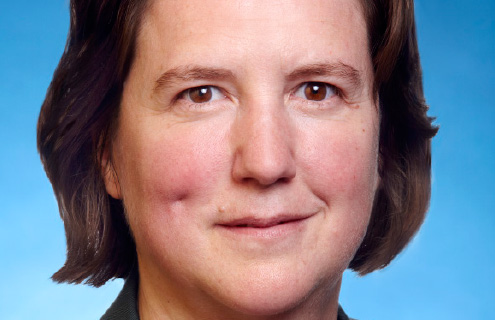Deutsche Bank
Deborah Thompson, global head of direct securities services sales for Deutsche Bank, breaks down the definition of the global custodian for AST
What is a global custodian, and how do you think this definition has changed over the past five years?
Global custodians facilitate cross-border securities trades across a broad range of assets. Their customers are institutional investors such as asset managers and broker-dealers, which choose not to appoint agent banks directly in each of the markets where they require safekeeping of assets.
Although custody—and directly related services such as asset servicing—are at the core of the offering, increasingly over the past few years these elements have been combined with other value-add post-trade services, such as securities lending, FX or collateral management.
Global custodians have traditionally maintained a direct presence in a relatively small number of core markets, appointing agent banks (or sub-custodians) such as Deutsche Bank with a local presence to provide the underlying services in markets where they are not present. However, this line between global custody and sub-custody is becoming less distinct as global custodians enter the sub-custody space and establish their own local franchises in addition to maintaining their agent bank network.
How are managers, custodians and brokers preparing for an uncertain future?
Obviously regulation is at the forefront of everyone’s planning for the future, and custodians are no different. They are running significant investment programmes to meet the requirements of new regulations such as TARGET2-Securities (T2S), Basel III and the European Market Infrastructure Regulation (EMIR).
T2S, for example, is acting as the catalyst for potential new models. One approach is the prospect of modular servicing, whereby custodians offer varied and tailored modules for their clients, covering the full range of solutions, from liquidity and collateral services to reporting and connectivity.
As for brokers, lower volumes in the equity market mean that infrastructure costs are currently high for this segment. The new capital requirements are also adding pressure, and brokers may potentially find it harder to access credit from the global capital markets. There is also increasing pressure on brokers to reduce costs. Many may decide that they will forego maintaining full back office infrastructure themselves (and the resultant headcount and IT costs associated with it) and outsource it instead. We see this as somewhat inevitable among second and third tier players in the market.
What might be the benefits of switching custodians?
Notwithstanding the benefits of getting a better quality service, there are a number of other things to consider. Fee reduction, and the possibility of accessing innovative new products or a bundle of services from a provider, is perhaps the most obvious one.
Another, more recent, trend is risk reduction. This has become increasingly important as buyers of services are looking to diversify their risk profile, or concentration on a small number of providers, whilst maintaining a number of relationships that gives them efficiencies of scale.
How does the buy side use survey results in buying decisions? Do you see an opportunity to shape these surveys?
The degree to which the buy side uses or treats the results of surveys varies widely. Where the consensus appears to come out, is that they are an extremely useful reference point, but have to clearly be put in context as they can never be all things to all people, and nor are they intended to be.
From a service provider perspective, we are always grateful to our clients for taking part in what feels like an increasing number of surveys looking for their participation.
What are ex-Europe clients looking for in their custodian?
Like clients the world over, they want to develop long-term strategic relationships with their providers, and they want their custodians to demonstrate commitment to their business.
From a product perspective, they want credit, access to liquidity, and usually the ability to purchase multiple integrated services from one provider, all with great day to day service—and the custodians that can deliver this the best, will differentiate themselves.
What do you think is an ideal balance between the in-sourcing and outsourcing of middle and back office services?
The outsourcing trend is accelerating, but clients like to know they are receiving a personal service, so they want to see front-line client-facing activities remaining in-house. This is especially important for priority clients, so the dedicated service of solving issues, problems and value-added services that is more middle office than back office will invariably remain in-house with most providers.
However, the processing element of the back office, which many providers will find increasingly expensive to maintain, is a more attractive proposition for outsourcing to a specialist back-office provider. Although the rationale for each organisation will be different, any decision will be based primarily on savings gained from reduced infrastructure and operational support, whilst maintaining or improving service levels.
Whether outsourcing makes commercial sense will often depend on the past and current state of technology investment and location of service hubs



